AWS Solutions Architect Associate Certification
Services Networking
CloudFront
In this lesson, we explore Amazon CloudFront—a powerful Content Delivery Network (CDN) that ensures your users receive web content quickly and reliably. We also revisit key concepts from the AWS Cloud Practitioner (CLF-C02) course that cover global content delivery.
When delivering content globally, your web server may be situated in one region (for example, North America). If a user in India sends a request, the data must travel a long distance, resulting in high latency. To mitigate this, AWS uses edge locations: smaller, geographically dispersed sites that cache data from your origin (such as a web server or an S3 bucket). Users receive content from the nearest edge location, ensuring minimal delay.
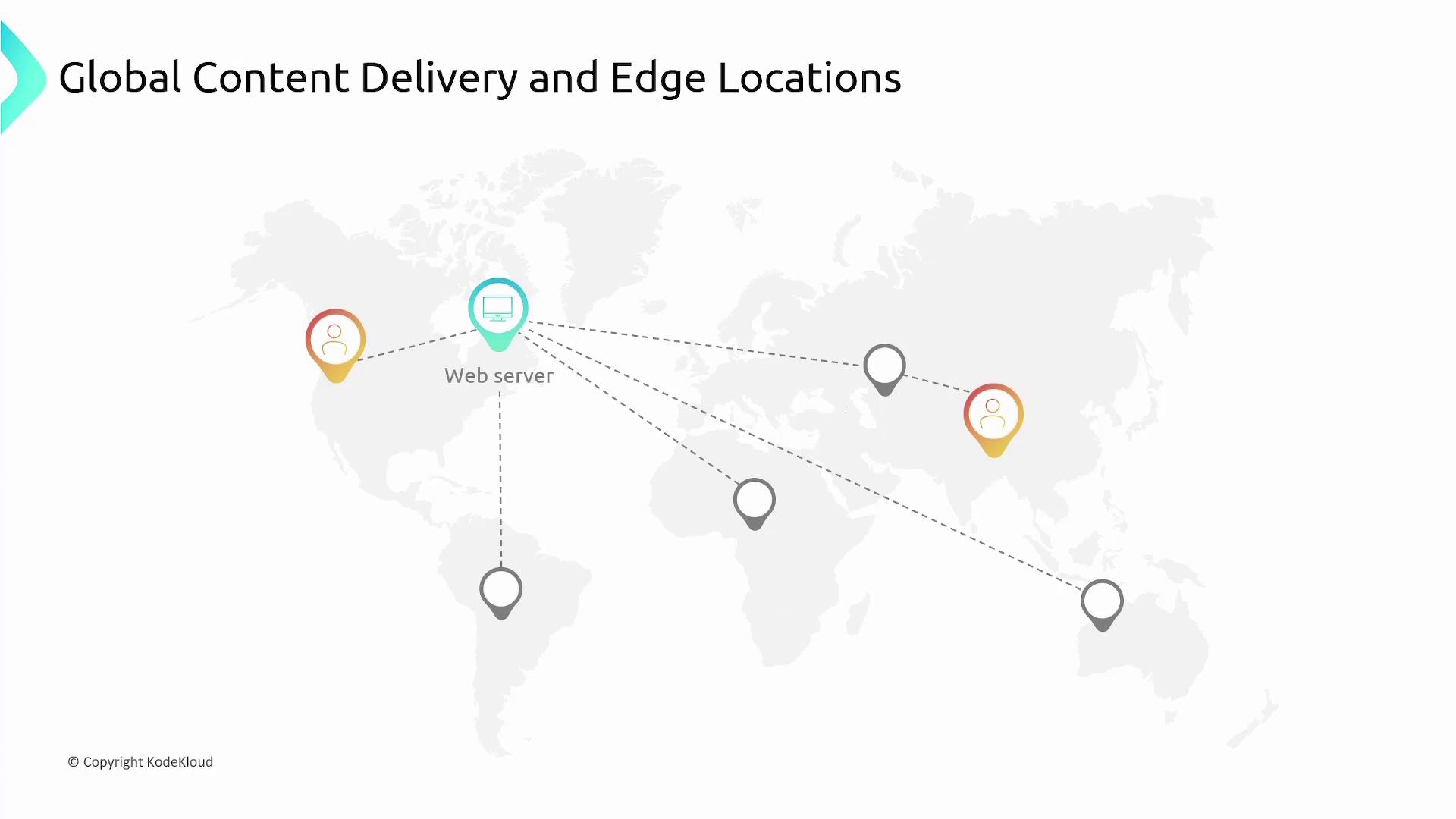
For instance, if users in Australia access your application, they connect to a local edge location instead of the distant origin server. This proximity reduces the interaction time with your application, making it more responsive. Essentially, Amazon CloudFront improves performance by caching content closer to users.
What is CloudFront?
CloudFront is a web service that accelerates the distribution of both static and dynamic content—including HTML, CSS, JavaScript, images, videos, and music—by delivering it from the closest edge location. This global network of edge locations minimizes latency by serving cached copies of your content rather than always querying a centralized server.
CloudFront Architecture
CloudFront's architecture is built on several core components that work together to deliver content efficiently. The following sections explain each component in detail.
Origin
The origin is the source of the content that CloudFront caches. This can be an S3 bucket storing images and files, or a custom origin like a load balancer or an HTTP server running on an EC2 instance. Once CloudFront fetches the content from the origin, it caches the data at nearby edge locations.

Distribution
A distribution in CloudFront is a configuration block where you define the origin settings. CloudFront generates a unique domain name (e.g., xyz.cloudfront.net) that users leverage to access cached content. Upon receiving a request, CloudFront checks for a cached version at the closest edge location. If available, it serves the file immediately; otherwise, it retrieves the content from the origin, caches it, and then delivers it to the user.

Time to Live (TTL)
The Time to Live (TTL) defines how long content remains cached at an edge location. By default, the TTL is set to 24 hours, meaning content is served from the cache for that duration before it is considered stale. If a user requests the content after the TTL expires, CloudFront must fetch a fresh copy from the origin and update its cache. You have the flexibility to modify the TTL based on your content freshness requirements.
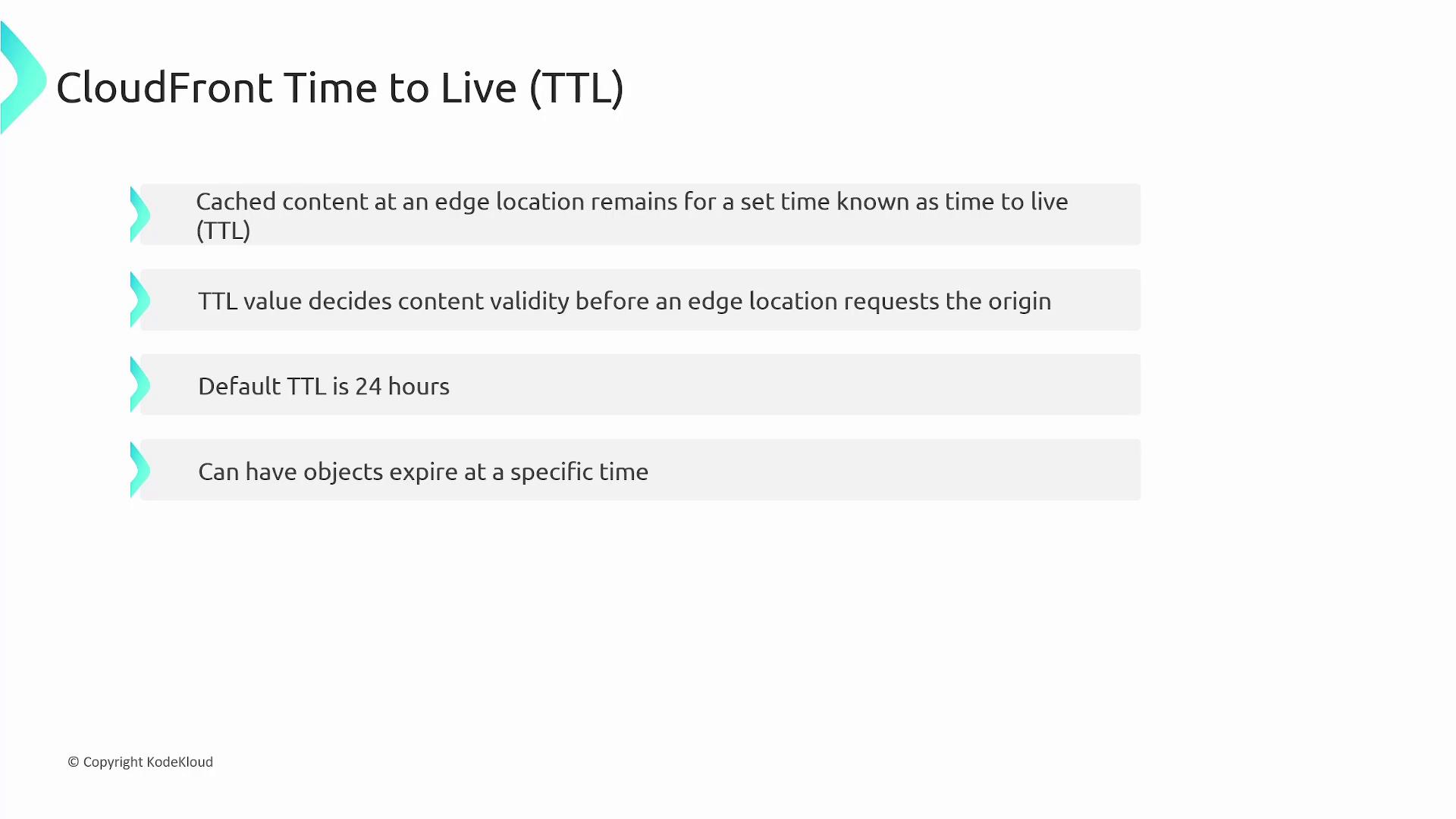
Cache Invalidation
Sometimes you need to update content before the TTL expires. CloudFront enables manual cache invalidation to remove outdated content from all edge locations. For example, if you update a file (from version one to version two), users might still retrieve the outdated version until the TTL lapses. By initiating a cache invalidation, CloudFront removes the old version so that the new version is fetched on subsequent requests.

Invalidations can be applied at the distribution level using a wildcard (e.g., "/*"), specific directories, or individual file paths.
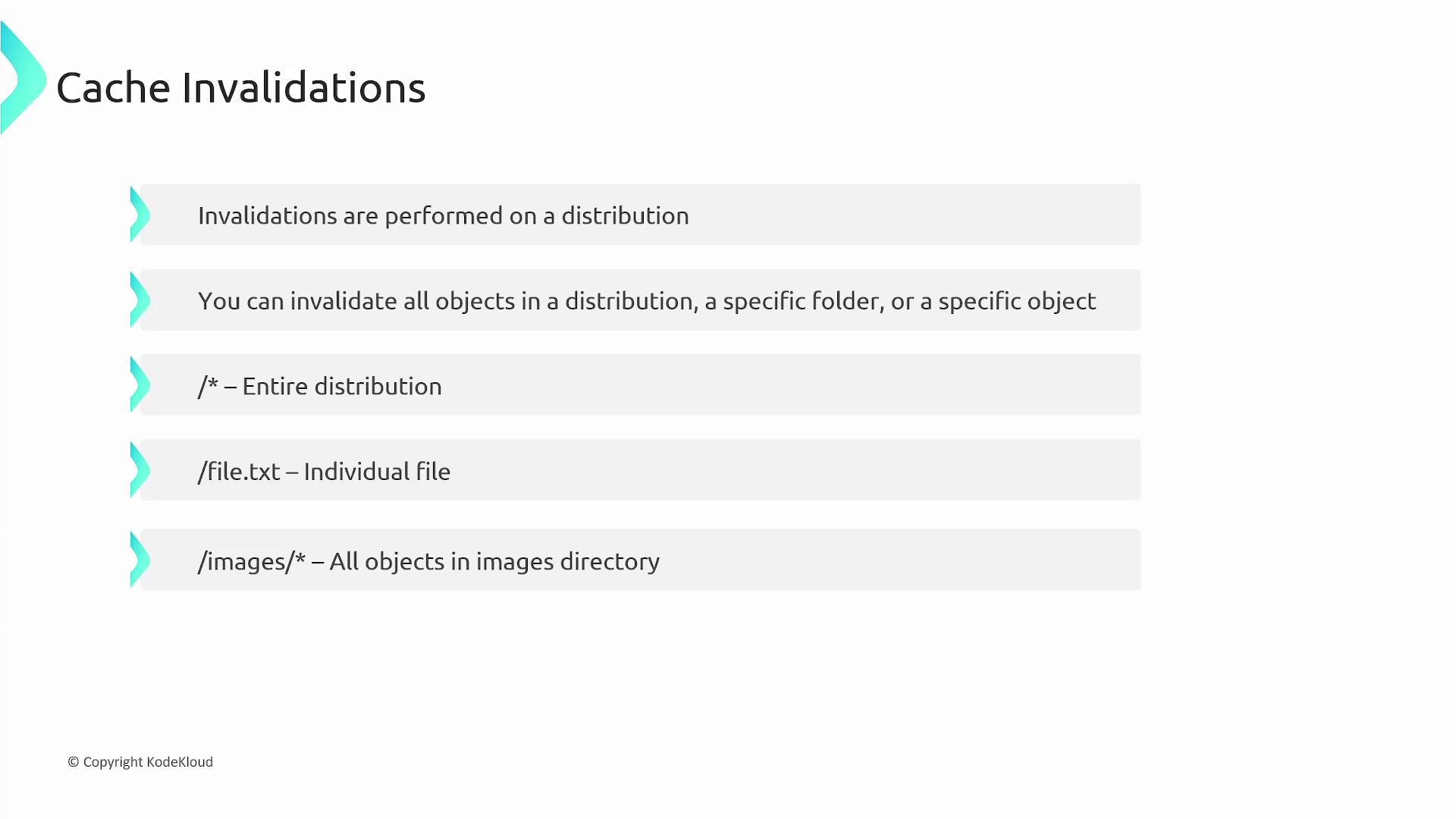
Integration with Other AWS Services
CloudFront integrates seamlessly with several AWS services to enhance its functionality:
- SSL/TLS: HTTPS is enabled by default. AWS provides a default SSL certificate (e.g., *.cloudfront.net), and you can use AWS Certificate Manager to customize certificates for your domains.
- CloudWatch: CloudFront automatically pushes operational metrics to CloudWatch, allowing you to monitor performance. You can also opt for additional metrics at an extra cost.
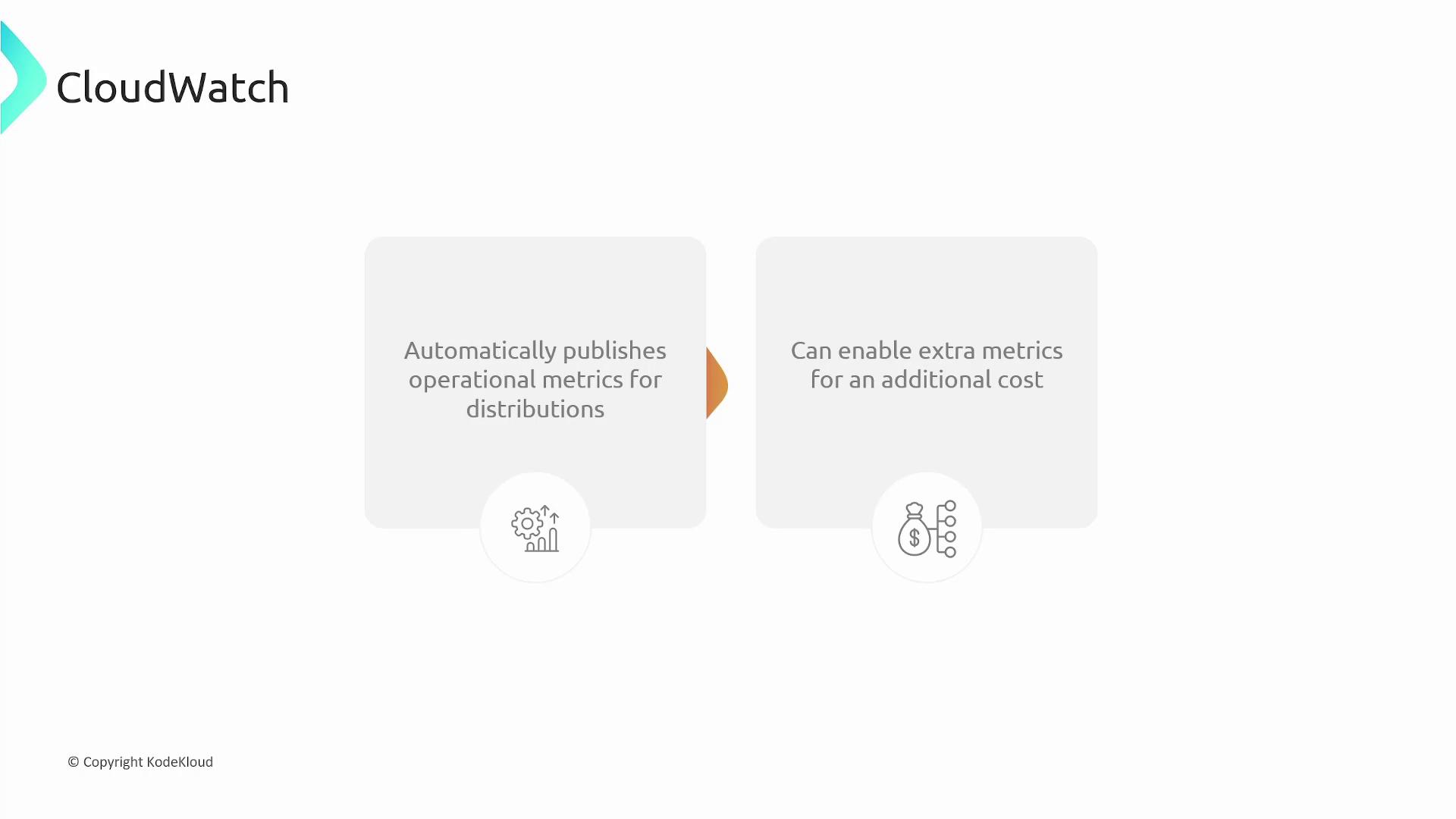
Use Cases for CloudFront
CloudFront is versatile and supports a wide range of real-world use cases:
| Use Case | Description | Example |
|---|---|---|
| Static Websites | Ideal for hosting websites without dynamic server-side logic. | Delivering HTML, CSS, and JavaScript files. |
| Video on Demand | Efficiently caches and delivers video content for on-demand streaming. | Streaming pre-recorded video content to users. |
| Media File Delivery | Ensures fast distribution of images, documents, and other media libraries. | Distributing downloadable files such as PDFs or images. |
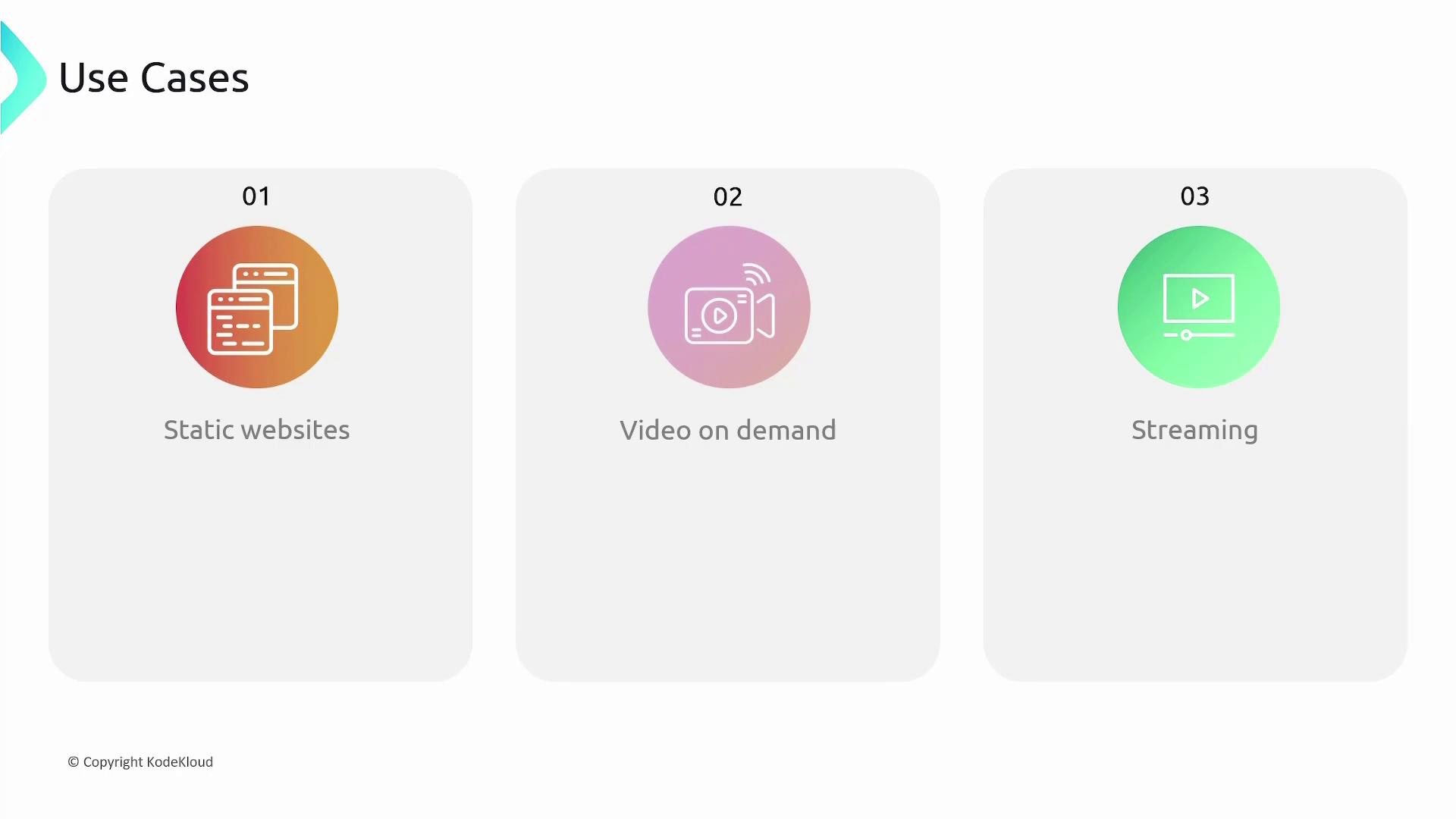
Summary
Amazon CloudFront leverages a global network of edge locations to deliver content with reduced latency by caching files closer to users. The core components include:
- Origin: The source of your content.
- Distribution: The configuration that defines how content is delivered.
- TTL: The duration for which cached content remains valid (default: 24 hours).
- Cache Invalidation: The process to manually refresh outdated content.
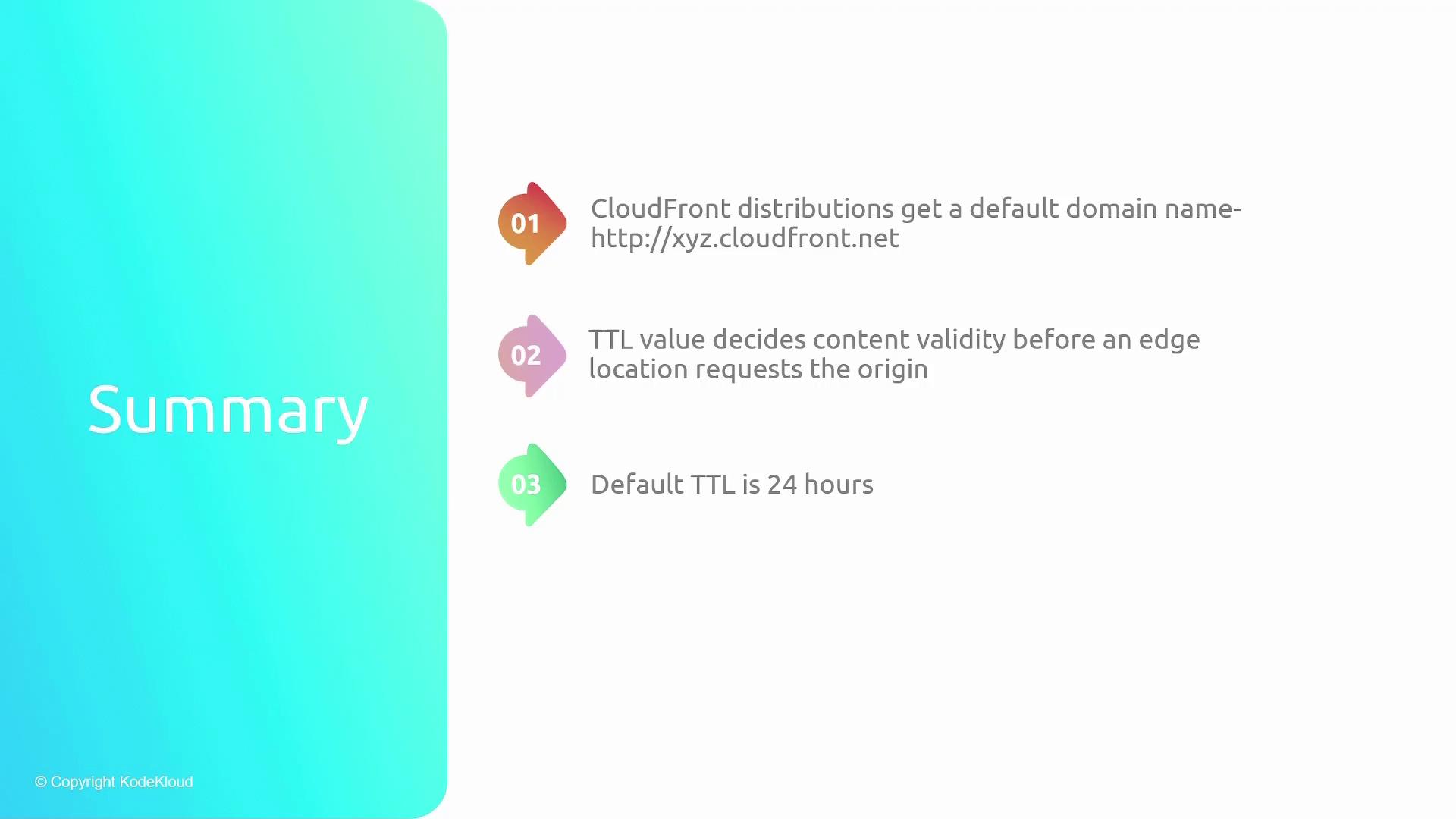
Key Takeaway
Understanding CloudFront's components and how they interact is essential for configuring a robust content delivery strategy that improves performance and reliability.
By leveraging CloudFront, you can ensure that your content is served quickly and securely to users around the globe, enhancing their experience and optimizing your web application's performance.
Watch Video
Watch video content